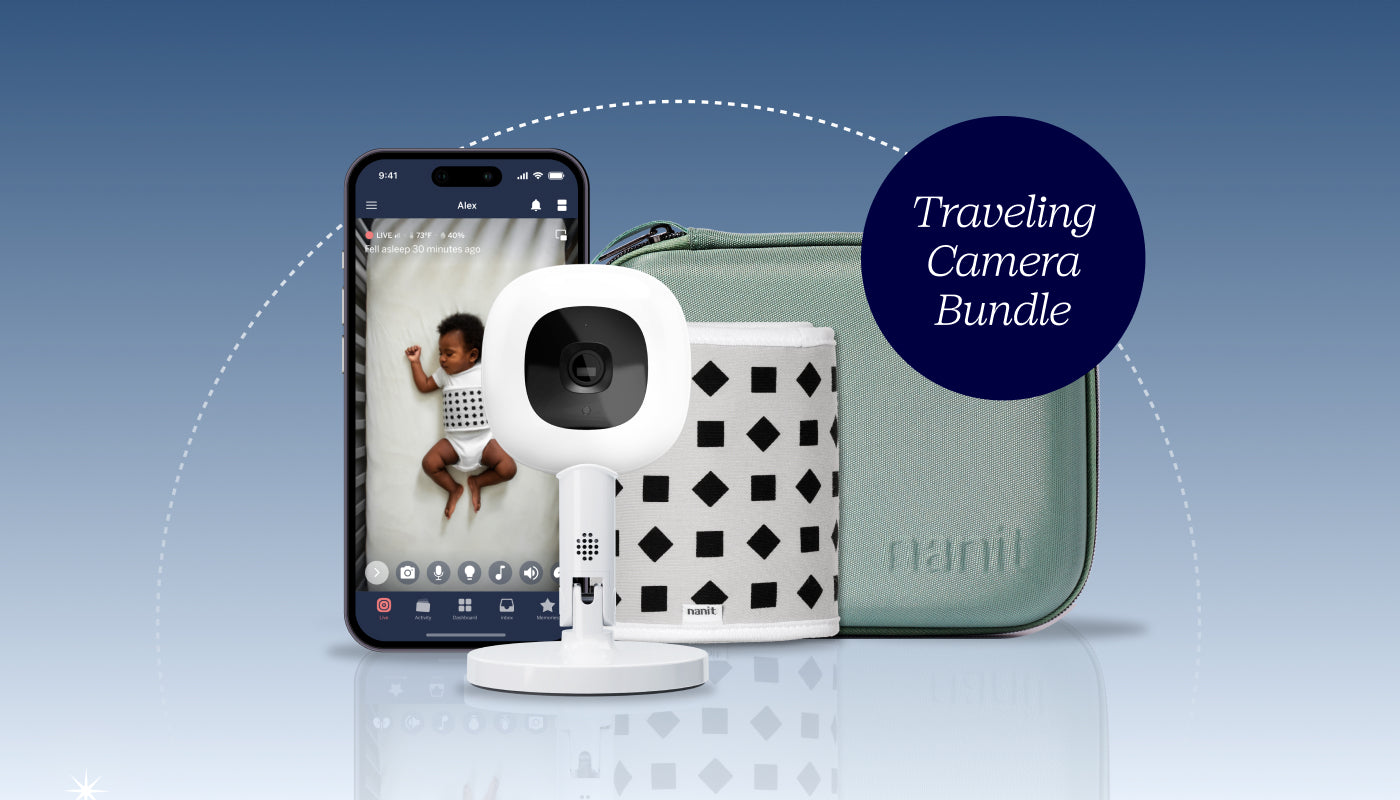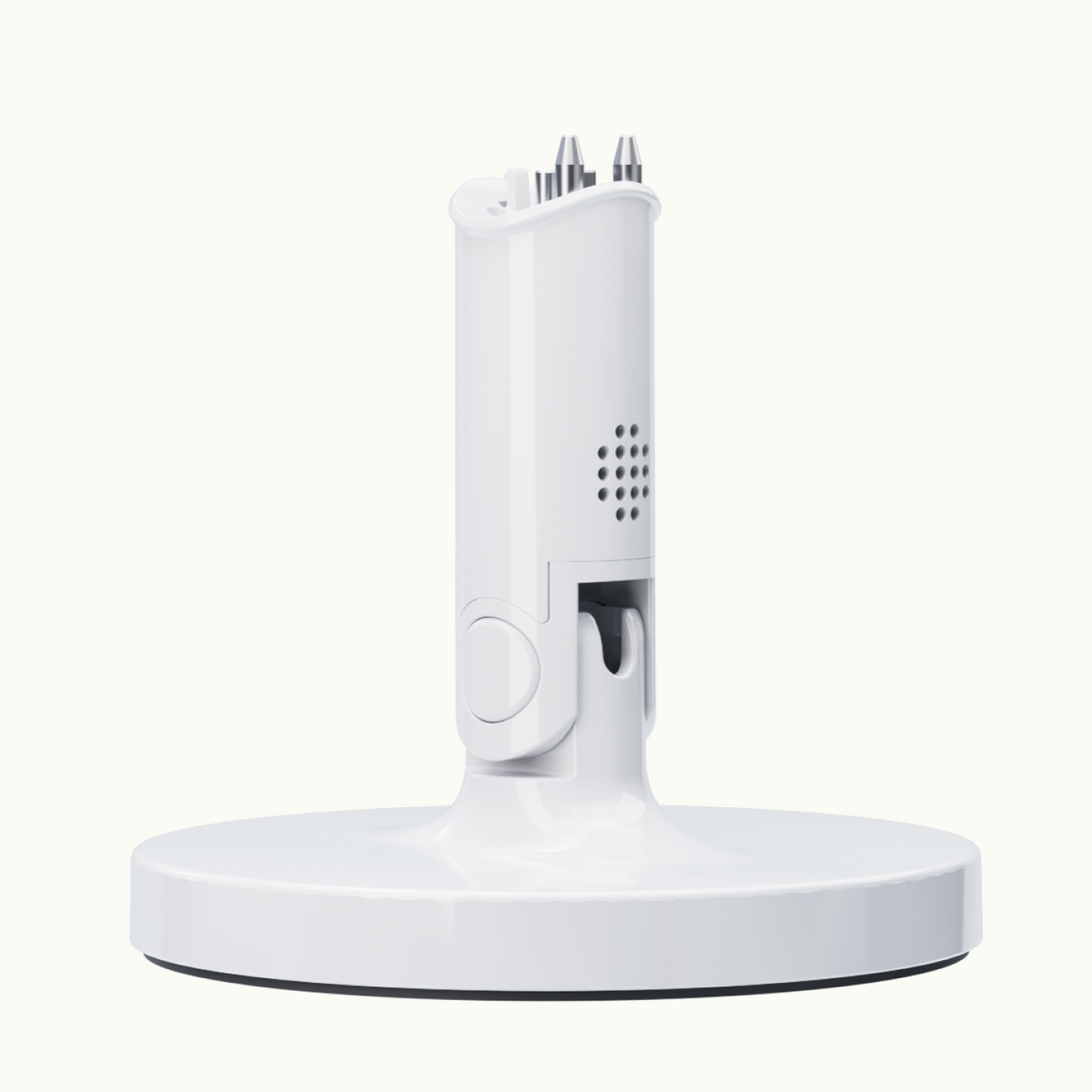There comes a time in every parent’s early days when the chances of sleeping longer than two hours at a time start to seem like a long-distant fantasy. One involving poolside vacations. And undisturbed naps in lounge chairs. In your fog of fatigue, you ask everyone you know, how—how?—do they manage to sleep for longer stretches? And then one mom friend mentions dream feeding.
What is dream feeding?
Dream feeding is the practice of gently rousing—without fully waking up—your baby to feed them right around the time you’re ready to head to bed. Because your baby is still half asleep, theoretically it’s easy to put them back in the crib where they quickly settle again into a sound sleep. The overall idea is that if your baby gets a snack before you turn in for the night, you and your little one will be able to sleep for a longer length of time. Baby gets fed, baby sleeps, you get more sleep, wins all around. Right?
Yes and no—and much of that depends on what feels good to you. So…
Is dream feeding right for you?
You’ve nodded off during Saltburn for the third time; time to call it a night. The idea of waking up your sweet—and loud—little wonder now when you can barely get into your pjs…. What if it takes another hour to get them asleep again? Dream feeding? Or some form of medieval torture? Here are some important details to help you decide:
The benefits:
- The overall idea of dream feeding is that it lets you sync up your baby’s need-to-eat cycles with your bedtime which, in the best of worlds, results in more sleep for you. Though that concept may be more myth than fact; see below.
- If you’re breastfeeding, dream feeding offers another opportunity to increase your milk supply.
- It can be a chance to give your baby extra calories, if that’s needed (if your doctor recommends it).
The drawbacks:
- Research has shown that dream feeding may not be that effective. In a 2021 study conducted by Nanit Lab, infants who were dream fed slept only marginally longer at night than infants who were not, about 5 minutes longer per night. And when comparing the amount of times babies woke up during the night and parents visited their baby’s crib, there was no difference between dream fed and non-dream-fed babies.
- Dream feeding can interrupt a baby's deep sleep and make it hard for Baby to settle back down. During the Nanit Lab study, 40 percent of parents stopped dream feeding because they felt like it wasn’t helping. PRO TIP: A tool like Nanit can help parents learn their baby’s sleep patterns.
- Dream feeding, if practiced, is really mainly for very young babies, 2 to 4 months. Babies younger than 2 months will likely need to be fed every two to three hours anyway, and will be waking up more often regardless of when you feed them. Most older babies no longer need to feed during the night. More than half of the parents in the Nanit Lab study (58 percent) stopped dream feeding once they felt their baby was sleeping better at night.
To sum up: Whether or not to dream feed comes down to personal choice: Do you feel like the practice helps you and your family? Great! Prefer not to add another to-do to your already full parenting plate? Also great! (And know that, scientifically speaking, it’s probably not making much of a difference anyway).
If you are curious to try out dream feeding, these tips can help it go more smoothly.
How to dream feed
Here’s what to do if you’d like to try dream feeding:
- Two to three hours after Baby’s bedtime, look for signs that your baby might be hungry or starting to rouse from deeper sleep (starting to stir or move more, making sucking motions). Nanit is a great assistant in these efforts.
- Go to crib and pick Baby up. Don’t move your baby too much (for example, stay in the nursery if you can rather than walking into a different room) and keep the environment as quiet and calm as possible. Also, minimize interactions with your baby. The goal here is for Baby to stay sleepy and mellow.
- A good general guideline for feeding amount: Nurse five to 10 minutes per side if breastfeeding, or if using a bottle, try 4 to 6 ounces of formula. Start on the shorter/lower amount and see if your baby seems satisfied/stays asleep until their next usual feeding. You can always increase the amount as needed.
- Gently put baby back in bed and quietly leave the room.
When to stop dream feeding?
When babies reach the age of 4 to 6 months old, most are able to sleep for between six to 12 hours without a feeding. Signs your baby might be ready to stop dream feeding include:
- They’re not interested in eating. If your little one isn’t taking a lot of formula or breastmilk, they are hard to rouse, or fall asleep in the middle of eating, chances are your baby isn’t hungry and doesn't need the dream feed.
- They start to wake up too much. If dream feeds are consistently leading to a busy baby who interacts with you and has a harder time going back to sleep, the feeds might be more of a hindrance than a help.
How to stop dream feeding
Whether your baby is old enough not to need a dream feed anymore—or you decide it’s no longer for you—there are three general approaches to stopping:
- Cut down gradually. Every few days, reduce the number of ounces of milk your baby gets, recommends Dr. Natalie Barnett, Vice President of Clinical Research at Nanit. Keep doing this over a period of a few weeks until your baby doesn’t need the dream feed anymore.
- Try skipping a dream feed altogether. If your baby doesn’t wake up, they’re likely ready to move on.
- Move the dream feed earlier in the night. Each night, shift the feed a little earlier until eventually it matches up with Baby’s last regular meal. Dream feed, all done!
For babies and parents cutting down on nighttime feedings, be aware that dream feedings are sometimes the last to go, the bridge between parents’ bedtime and the next day. So above all, follow your instincts and do what feels best for you and your child to help everyone get a good night’s rest.
Get a FREE custom sleep and feeding schedule
Our pediatric sleep experts at Nanit Lab deliver a personalized schedule based on your baby’s age, feeding method, current rest patterns, and more. Plus, you’ll receive tips on upcoming milestones and features to help you with each new stage!



